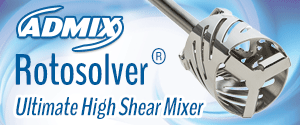GEA PowerGrind Models Improve Efficiency in Meat Processing Companies

The recent addition of the GEA PowerGrind 200 alongside the larger 280 model completes this robust, high capacity PowerGrind family. These grinders cut up fresh and frozen meat, and supersede the GEA AutoGrind range. The twin-screw design, an innovative GEA design introduced with the AutoGrind, is still the benchmark technique for grinding fresh or frozen meat without the need for changing the cutting set or screw. It results in fewer fines and less dust and no crushed meat. Improvements include auto-reverse screw that prevents blockage and an even more robust construction. Faster infeed possibilities, hygienic and safety design that has earned DGUV approval and PLC control that facilitates standardization thanks to automation within the production line are additional new features of the GEA PowerGrind models. This stream of refinements helps meat processors improve operational efficiency and reduce costs.
Cut blocks rather than break them
The double-screw configuration features a slowly rotating feeder worm that cuts frozen blocks rather than breaking them. Particle definition is excellent and fat separation is kept to a minimum. This technique also generates very little heat, so quality is maintained with no squashing or smearing. Product Manager for GEA’s grinders Willem Prinssen says: “The double-screw widened the application window for grinders. To take things to a higher level, we’ve made the screws more robust and the grinder smarter. The PowerGrind features a patent pending technology that automatically reverses and then restarts feeder screw if the machine senses that the processing screw is being fed with too much product. This Auto Reverse Drive keeps the machine going.”
More applications, higher capacity
The capacity for the 280 version is up to 30 tons per hour for fresh meat, and 11 tons per hour for frozen. GEA’s product expert for grinders Harrie van Beers says: “The capacity is so high, the challenge is not getting ground meat out of the grinder, it’s getting enough raw material in.” To overcome this, the GEA PowerGrind´s ability for uninterrupted continuous operation has been boosted with an infeed hopper designed to ensure loading meat blocks from meat trolleys or bins does not lead to stoppages relating to bridging.
Easier to work with
Another boost to productivity is the reduced changeover times for the two-worm configuration. Reverse operation of the processing worm enables the cutting tool to be changed with ease even if the machine is loaded, and because it uses a smart trolley and doesn’t need a crane, changing the tooling is a one-man job.
DGUV approval for hygiene and safety
In terms of hygienic design, the PowerGrind also sets high standards. Cleaning is simplified thanks to a unique hinged lining that simplifies access to the channels and interior without the need for hoisting or supporting equipment. With the correct tools, the machine is ready for cleaning in just five minutes. All joints in the processing areas are welded and rounded, and all surfaces are inclined to prevent water collecting. The drive zone and processing zone are fully separated, virtually eliminating the risk of contamination across zones. It is the first industrial grinder to receive the prestigious DGUV approval, Europe’s highest safety and hygiene standard.
Automation saves costs
With PLC control, the GEA PowerGrind can be integrated into an automated line, which opens the door to standardization incorporating continuous fat analysis. In combination with the recently introduced GEA ProMix twin-shaft mixer and GEA’s real-time fat analysis, fat percentages can be kept very close to agreed specifications. This prevents costly lean meat being given away and it provides the means to verify the quality of incoming raw materials. The potential cost savings are considerable.


































